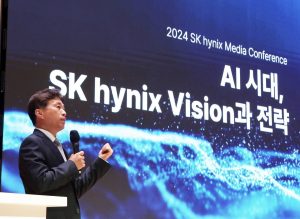Popular Keywords
- About Us
-
Research Report
Research Directory
Semiconductors
LED
Consumer Electronics
Emerging Technologies
- Selected Topics
- Membership
- Price Trends
- Press Center
- News
- Events
- Contact Us
AI
News

[News] SK Hynix Sets 2024 Record, Surpasses Samsung in Q4 Profit for the First Time
SK hynix announced today that it recorded best-ever yearly performance with 66.1930 trillion won in revenues, 23.5 trillion won in operating profit with an operating margin of 35%, and 19.8 trillion won in net profit with a net margin of 30%. SK hynix’s yearly revenues marked all-time high, exc...
News

[News] TikTok Parent ByteDance to Invest USD 12 Billion in AI Chips by 2025, With Expenditure in China Doubling
According to a report from TechNews, citing Financial Times, TikTok’s parent company ByteDance is making substantial investments in AI infrastructure, with plans to spend over USD 12 billion on AI chips by 2025. At the same time, ByteDance is under pressure from the U.S. government to sell its ...
News

[News] Why the U.S. Bars India from Unrestricted Access to AI Chips
On January 13, the Biden administration issued new restrictions on the export of AI chips, aiming to block rivals like China from accessing advanced technology. Notably, India, a strategic partner of the U.S., is excluded from the list of 18 countries that are granted unrestricted access to advan...
News

[News] TSMC Projects 20% Revenue CAGR Over the Next Five Years, Driven by AI Demand
On January 16, TSMC held its earnings call, during which Chairman and CEO C.C. Wei provided insights into the continued growth in AI demand. As reported by TechNews, Wei underscored that AI demand is expected to remain strong through 2025, positioning it as a key revenue driver for TSMC in the ye...
Insights

[Insight] Analysis of Humanoid Robot Vision Systems and Opportunities for Taiwanese Companies
According to TrendForce, with AI empowering hardware devices, the applications for robots have expanded significantly. Beyond manufacturing, humanoid robots can be applied in general consumers’ work and life environments. The multifunctional humanoid robot, suitable for both manufacturing and serv...
- Page 3
- 24 page(s)
- 118 result(s)





